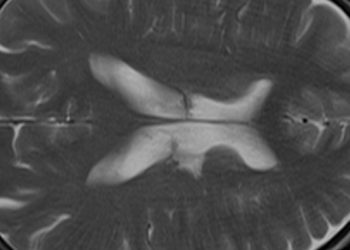High-dose exercise therapy is not superior to low-dose exercise therapy for knee osteoarthritis
1. In this randomized control trial of knee osteoarthritis patients, there was no significant difference between high-dose and low-dose exercise therapy for Knee injury and Osteoarthritis Outcome Scores (KOOS).
2. No significant difference between groups was found in patient experience of pain intensity or quality of life.
Evidence Rating Level: 1 (Excellent)
Study Rundown: Knee osteoarthritis can significantly impact patient quality of life through chronic joint pain, knee stiffness, and decreased functioning. While exercise is recommended for osteoarthritis treatment, it is unclear the optimal dose of exercise therapy. This randomized clinical trial compared high-dose and low-dose exercise therapy for patients with knee osteoarthritis. High-dose therapy was defined as 11 exercises over 70 to 90 minutes. Low-dose therapy was defined as five exercises over 20 to 30 minutes. Patients exercised three times per week for 12 weeks, and then followed up at six and 12 months. The primary outcome was the difference in the KOOS, which measured pain, symptoms, function in daily living, function in Sport/Rec, and knee-related quality of life, at three months from baseline. The secondary outcome was the Visual Analogue scales (VASs) for pain and the index and VAS from the EuroQoL Group 5-Dimension (EQ-5D) tool for health-related quality of life. For the primary outcome, while patients in both groups improved on the KOOS, there were no significant differences between groups. The high-dose therapy group scored significantly higher KOOS Sports/Rec subscale at the end of the intervention and at six months follow-up. No significant differences were found for the VASs and EQ-5D scores at any of the follow-ups. As a limitation, there was no control group and therefore, the true benefit of exercise therapy was unable to be assessed.
Click to read the study in AIM
In-Depth [randomized controlled trial]: This randomized controlled clinical trial assessed the efficacy of high-dose versus low-dose exercise therapy for improving quality of life and symptoms in knee osteoarthritis patients. A total of 189 patients aged 45 to 85 with knee osteoarthritis and a history of knee pain with decreased function were randomized to receive either high-dose (n = 98) or low-dose (n = 91) exercise therapy. Exercise therapy was administered three times per week over 12 weeks in both groups. In the high-dose exercise therapy group, sessions consisted of 11 exercises over 70 to 90 minutes per session. Conversely, the low-dose exercise therapy group received five exercises over 20 to 30 minutes. Patients were followed up at both six and 12 months after the intervention. For the primary outcome, there were no significant differences between groups in the KOOS at any point of follow-up. However, the KOOS Sport/Rec subscale score was significantly higher in the high-dose therapy group compared to the low-dose therapy group at the end of the intervention (Mean Difference [MD], 8; 95% Confidence Interval [CI], 2 to 14) and at six months after intervention (MD, 11; 95% CI, 4 to 17). The significant difference was not sustained at 12 months follow-up. For the secondary outcome, there were no differences in mean score for the pain intensity (VAS) score or quality of life (EQ-5D) scores. The results from this study did not support the superiority of high-dose exercise therapy over low-dose exercise therapy for knee osteoarthritis patients.
Image: PD
©2023 2 Minute Medicine, Inc. All rights reserved. No works may be reproduced without expressed written consent from 2 Minute Medicine, Inc. Inquire about licensing here. No article should be construed as medical advice and is not intended as such by the authors or by 2 Minute Medicine, Inc.






